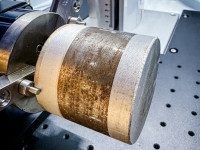Step-by-step instructions
Create your own professional laser cutter templates
When working with a laser cutter, the quality of the end product stands and falls with the precision of the template. A well-designed template is the key to a successful cutting and engraving project. Creating a customized template for the Laser Cutter requires care, precision and attention to a number of important factors.
Choosing the right software
The foundation of any Laser Cutter template is software that can create vector files. Programs such as Adobe Illustrator, CorelDRAW or free alternatives such as Inkscape are ideal as they offer precise control over the graphic elements and allow the creation of vector files that can be read by most laser cutters.
Graphic design
Vector graphics are essential as they provide the scalable line management required for laser cutting. When designing, it is important to ensure that:
- All lines are clearly defined.
- The graphic does not contain any superfluous nodes.
- The line thickness for the cutting lines is set to the minimum setting to ensure precise cuts.
- All lines are closed and there are no overlapping elements to achieve an error-free result.
Coordination of cutting lines and engraving surfaces
A critical aspect when creating a template is the distinction between cutting lines and engraving areas. Cut lines should be marked as vectors with a specific color, while engraving areas are often represented by area fills or rasterization. These must be set correctly in the design program in order to be interpreted correctly by the laser cutter.
Choosing the right materials
The choice of material depends on the project. Here are a few points to bear in mind:
- The material thickness and type must match the capabilities of the laser cutter.
- The size of the material must not only be suitable for the desired end product, but also for the work table of the laser cutter.
Step-by-step instructions for creating a laser cutter template
- Choose software: Opt for graphic design software that supports vector graphics.
- Create design: Create your design taking into account the requirements for cutting and engraving surfaces.
- Define material: Select the right material for your project.
- Prepare graphics: Adapt your vector file so that cutting lines and engraving areas are understandable for the Laser Cutter.
- Perform a test run: Perform a test run with your laser cutter to ensure that the template is transferred correctly.
- Check post-processing: Check the test piece and adjust your template if necessary.
Creating a customized template for the Laser Cutter requires care and attention to a number of important points. From selecting the right software and designing the graphics to coordinating cutting lines and engraving surfaces - all these steps are crucial to achieving optimum results.
Creating your own laser cutter templates is a process that combines creativity with technical know-how. With the right software and careful preparation, designs can be brought to life with precision.



